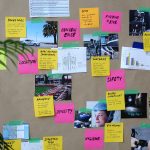3 Case Studies in Digital Privacy Leadership and Policy
Lorayne Robertson and Bill Muirhead
This chapter will help students to:
- Structure a well-design case study on digital privacy in education.
- Articulate why the case study method is an effective learning tool in graduate education.
- Reflect critically on the case study they have selected to study.
Students taking the Digital Privacy: Leadership and Policy course are required to write a case study about digital privacy. When writing this case study, they are encouraged to base their digital privacy scenario in a context with which they are familiar, such as their individual experience or a known context. Students examine a problem or situation, suggest solutions and reflect on these solutions. The case study was a deliberate, pedagogical choice for this course for multiple reasons. In the next section, the authors explain the theory and the practice associated with case studies through seven elements:
- Distributed learning
- Continuous assessment
- Active learning
- Collaborative learning
- Learning in a community of inquiry
- Problem-based online learning
- Reflective practice
Case Studies: A Deliberate Pedagogical Decision
- Distributed learning: This is a deliberate element of course design that encourages students to circle back and examine key concepts frequently. As Carpenter (2020) explains, distributed learning (also called the spacing effect) promotes better learning because the learning opportunities are spaced apart and are more likely to catch students’ attention. It can also link to multiple contextual clues. When students spread out their work, it has a direct impact on how well they perform in the course (Eddy & Hogan, 2014). Distributed learning scaffolds the overall assignment into smaller assignments. The second assignment builds on the first, and so on. Students submit sections of the overall assignment for formative assessment. This allows students to obtain rich, detailed feedback at an early stage and helps to build confidence that they are on the right track. The final assignment is a culmination, demonstrating summative learning throughout the course.
- Continuous assessment: One of the affordances of information and communication technologies is the means to provide rich feedback in multiple formats including providing digital handwritten annotations to assignments, text comments within a document/assignment and video or voice feedback to assist students in exploring and completing assignments. Rich asynchronous feedback with synchronous discussions between the instructor and students that mimic the established office hours of old can create an environment where instructor and students are engaged in a context of learning together and exploring in unison.
- Active learning: The pedagogical approach of active learning means that students are engaged in pursuing knowledge and co-constructing their learning (as opposed to passively acquiring learning provided by another source). Active learning is more engaging when the topic is relevant to the student and has a ring of authenticity because this could happen and this increases engagement. Key elements of active learning include collaboration, cooperation, and problem-solving. The pedagogy is student-centred, self-directed and self-reflective with the instructors as guides (In other words, the students are directing their learning and the instructor is a guide (Jonassen, 2011).
- Collaborative Learning: This pedagogy, which requires individuals to work together toward a common goal has been widely researched (Laal, 2013). A critical element of collaboration is positive interdependence which means that each person in the group is responsible for their own learning and the overall learning of the team toward the common goal—in other words, no one succeeds unless everyone succeeds (Johnson et al., 1994). It does not mean that one or two persons assume the work for the others. It requires the individuals to take on responsibility for the social skills required, to allow and support the cognitive development of others in the group, and to participate in frequent group discussions toward the common goal (Laal, 2013).
- Learning in a Community of Inquiry: The creation of an online community of inquiry requires more than providing a textbook or a series of lectures. The concept of a community of inquiry articulated by Garrison et al. (2001) is one that includes a commitment by all of the participants in the online community to support collaborative engagement, academic discourse and critical reflection. The learning community works to build social presence—a climate of learning that is safe and includes open communication and affective elements. The second element is cognitive presence, which includes a sense of discovery, information exchange and application. There is also a teaching presence in online learning, setting up the course design and methods and building structures to support cognitive presence and social presence (Archer, 2009).

Note. Magnifying glass keyboard, by A. Olloweb, 2018. - Problem-based online learning: Savin-Baden (2007) explains that problem-based learning (PBL) involves the study of complex, authentic scenarios that do not have one right answer but provide a focus for learning. Students work in groups to identify the problem and identify what they know or do not know about the problem. Using self-directed learning, they seek information and develop possible solutions. The act of generating solutions is a form of experimenting. Faculty act as facilitators, guiding from the side.
- Reflection: While some might argue that experience is the best teacher, others theorize that reflection plus experience is what is needed for learning to happen (Brookfield, 1995; Kreber, 2001; Larrivee, 2010). Many times, students will work through a case study or through problem-based learning and miss the essential element that has the potential to make the learning stick and this element is reflection.
Why Employ a Case Study in Graduate Education?
Case studies allow learners to examine a field of study when the context for practice in the field, in this case, digital privacy leadership and policy, is continuously changing and precariously complex. Both topics: privacy and education provide rich opportunities to theorize problems that are authentic (and sometimes ill-structured and messy) and try out solutions in a safe space. Case studies provide a means or method to:
- examine authentic problems,
- facilitate the examination of complex contexts,
- apply theory to practice in a safe space, and
- encourage deeper thinking while examining complex contexts.
The context of education is complex as is the topic of digital privacy in education. There is no such thing as a typical day for educational leaders. Interactions will include opportunities to influence and be influenced by students, teachers, instructors, staff, other administration, parents, bus drivers, social workers, police officers, and community leaders, and this is by no means an exhaustive list.
Education is a part of society and education reflects what is happening in society. Education policies are part of larger policies, such as human rights legislation. Similarly, the anxieties of the larger society are reflected in education. In many ways, education is a reflection of the society (an open system) in which it exists and, as in society, decisions and policies are complex and multi-faceted.

Writing a case study is like telling a story. Narrative inquiry has a long history both in and out of education and narratives help students to study the educational experience. According to Connelly and Clandinin (1994), “One theory in educational research holds that humans are storytelling organisms who, individually and socially, lead storied lives. Thus, the study of narrative is the study of the ways humans experience the world” (p. 2). When writing the case study, we recommend that students conceptualize this as telling a story and think about telling their story for an audience.
According to Gill (2011), a discussion case study is created to examine a topic or situation, present options, develop solutions and evaluate the solutions. Case studies are not written to identify the right and wrong solutions but to examine, analyze and weigh complex and competing insights within a context (Gill, 2011). The difference between a case and a case study is that a case is a real-life situation or as close to real-life as possible without breaching confidentiality, whereas a case study is an analysis of a situation (Gill & Mullarkey, 2015). A case study is also a clear pedagogical choice because it moves away from telling a war story about something that happened, to telling the story using a pedagogical design that encourages critical and reflective practice.
A case study creates an opportunity to safely explore problems in a safe context of storytelling. Cases can be thought of as thought experiments where the author can explore ideas through a recounting of actions and individual insights through their interaction with policies and problems. Problems can be described and situated within environments where solutions can be tested and explored without any real-world constraints. Exploring solutions to problems through a combination of fictional and everyday contexts creates spaces where solutions can be tested to the most confounding problems, and potential actions can be explored and planned for within a case. Case studies are a means for creativity where leadership, analysis, research, emerging and new technologies, method, subject matter, evidence and data can be purposefully manipulated creatively to explore the complexity of privacy and human behaviour.
Preparing Your Case Study Assignment
| In this course, the case study assignment includes the following elements which are described below:
a) an executive summary; b) description of the context/worksite and policy environment; c) description of the people involved, their responsibilities, and accountability in the organization in addition to an organizational chart with respective reporting lines; d) the problem and a variety of potential solutions; e) critical reflection on the desired solution and decision to resolve the problem or conflict and the impact of the solution on the actors involved; f) video presentation to describe the case study; g) identification of the key discussion questions from the case and topics for critical reflection; and h) the final paper which is a group paper. It should be approximately 2000 words excluding the reference list. Students should label which sections each group member contributed. |
Here is an explanation of each of these segments of a case study:

a) Introduction: This is a description of the case that should explain why this particular case study is compelling, important, or significant. Students will be encouraged to incorporate references into the introduction so that their scenario can be grounded in the literature or situated within gaps in the literature. A case study should have an overview (one page) that introduces the case and draws in or hooks the interest of the readers. The one-page case overview should do the following: 1) Introduce the key decision-maker or the protagonist in the case study by providing a name, this individual’s role in the organization and a brief reference to the decision that needs to be made. 2) Include an overview of the case that provides some context, describing the educational institution, country or region, and when technology is involved, an overview of the technologies will be included in the context. 3) Incorporate an overview page that includes the decision that needs to be made and 4) explain the alternatives to the decision.
b) Description of the context/worksite and policy environment: The context of the case is presented in this section, which needs to cover the required information about the context working in general from the broader context to the more specific elements of context. This will challenge students to consider how to explain a context so that others can situate themselves within the context for discussion. If technology is significant, the context description will include this within the context of the country or the region, the description of the particular school, college, or university setting. The policy environment is also significant, as the guidelines, laws or procedures for the school authority, district, institution and provincial or national authority may be important aspects of the context.
c) Description of roles and reporting: The people in the organizational unit within which the decision is to be made are presented in the third section, outlining the levels of responsibility and/or the stakeholder elements. This section should identify everyone who is involved in the case. If a chart is provided, a written explanation of the roles should also be provided. Again, this section should be fairly descriptive of all persons involved.

d) The problem and a range of solutions: Identifying the problem to be addressed in your case study is an important step. It is important here to distinguish between the causes of the problem, the symptoms of the problem and the actual problem. Working together, the case study group should identify any solutions that need to be made, identifying the nature of each solution, its importance, and the potential repercussions of that solution or decision. Alternative solutions should also be presented and explored fully, reflecting on each potential decision and its implications and potential impact. Within this section, students may call on related theories or models that might help with the consideration of this case.
e) Critical reflection: The closing section of the case study should present the final reflections of the decision-maker on the path that was chosen, the action plan or timeline, and anticipated outcomes. More importantly, the justification for the decision should be considered. When adult learners pause and re-consider the assumptions on which their learning has been built, they are engaging in critical reflection.
f) Video presentation: Students will prepare a digital version of the case study scenario and engage the class in academic discourse. Video presentations can often help to present a case in ways that reliance on text cannot. Video presentations may incorporate media types such as graphics, visual presentation of ideas, voice and video content that help others to understand the important context of a case study. As well, video allows both instructors and students to share cases in multiple learning environments. Case study videos can be created using voice-over PowerPoint, screen capture which incorporates audio elements as well as original video content and sets the stage, location and culture associated with the case study. Those students who possess video editing skills may choose to create elaborate video content, while others may choose a less complex video format. The goal is to create a digital version of the case to accompany the written case study which can be presented in class.

g) Reflection and discussion questions: Each case study should include the discussion questions and key areas for reflection to encourage the class to engage in academic discourse.
h) Final paper: Groups should know that there is no single correct process for writing the group paper. In some groups, all of the writing is done together through a shared document. In others, writing is done in pairs. In others, one or two writers take the lead and others fill in with comments and reviews. What is key is that the group members should contribute more or less equally. The final paper should reflect the process of the group in problem-solving the case study. Use a spell and grammar checker. Sometimes groups do not leave enough time for revising. Fresh eyes: If possible, build in some time to set the paper aside and look at it.
| Length | Overview | |
| Executive Summary of the Situation | 1 page |
|
| Context | 1-2 pages |
|
| People/ Organization | 1-2 pages |
|
| Problems and Solutions | 1-2 pages |
|
| Closing | 1 page |
|
| Discussion/
Reflection/ Lessons Learned |
1 page |
|
Note. Case study guidelines, by L. Robertson and B. Muirhead, 2017.
Case Studies as Learning
The concept of digital privacy in education provides rich opportunities to theorize problems and solutions to guide insights in authentic contexts. Above all, we need to keep in mind that a case study is a learning strategy that involves collaboration, communication, synthesis of information, creativity and imagination. Students who are writing case studies are using most of the levels of cognition in Bloom’s taxonomy!
Case studies:
- facilitate the examination of complex contexts;
- help students apply theory to practice in a safe context;
- encourage deeper thinking;
- help students learn how to frame a problem;
- allow students to apply theory to practice;
- allow students to practice skills of short- and long-term decision-making;
- help students to appreciate multiple perspectives of multiple stakeholders;
- encourage consideration of the values and broader social issues surrounding cases;
- encourage critical reflection and reflective practice;
- allow students to practice writing and revision; and
- provide examples for other students to study and compare to similar stories.
At the present time, there is a shortage of case studies surrounding digital privacy and technology in education, indicating a gap in the field. The authors of this paper were unable to locate studies that examine learning in education leadership through case studies that include digital privacy, which may indicate that presently, there is a gap in the field. Similarly, there were no case studies located that were presented by students or to students for discussion using polysynchronous methods or digital contexts for their educational leadership studies. This is an area for further exploration where student-developed case studies could enrich the field. For example, educational leadership students can reflect on their learning when it is provided through the means of an engaging case study discussion and compare this with their learning from other methods such as problem-based online learning (Savin-Baden, 2007) and other forms of active, constructed online learning.
A Few Final but Important Thoughts on Reflection
In the Digital Privacy: Leadership and Policy course, students are asked to provide their peers with reflective comments to improve their case studies. Peer feedback has been found to be one of the most powerful influences on learning but its impact can be both positive and negative; how the feedback is given is vitally important (Hattie & Timperley, 2007). Peer feedback is an active learning strategy. van Popta et al. (2016) analyzed the literature on peer feedback in online learning. They find that giving peer feedback benefits students by making them think more critically. It helps the peer-reviewers to improve their own work but beyond that, helps students understand new concepts and build knowledge. Some studies show that peers compare their own work to that of their fellow students, and this internal feedback builds new knowledge. It is important to give peer feedback with explanations and examples so that the learner understands and benefits from the feedback. The process of giving good feedback builds students’ writing skills (van Popta et al., 2016). In other words, peer feedback is a win-win proposition for more powerful learning.
Here are questions that students are asked to consider as the basis for their feedback on the Case Study presentations in the Digital Privacy: Leadership and Policy course:
|
The use of case studies is, itself, an important teaching and learning strategy. Educators have many stories to tell based on their experiences. The process of a case study encourages students to examine the case study and work together to identify steps to work through a problem and weigh the potential outcomes. Educational problems are typically ill-structured (meaning messy), and no clear solutions are evident. The process of breaking down the problem into its small elements and analyzing the available resources and potential solutions is part of the learning. When working on a case study, students should be more concerned about developing strong problem-solving skills than solving the case. In fact, rather than settling on a solution early in the process, we encourage students to seek alternative solutions early in the process and develop their skills to determine why different solutions and resources might work in different contexts. The case study in this course has been constructed to encourage students to consider alternate perspectives of those who are impacted by the problem. Identifying alternatives and developing reflective questions are intended to assist students in both understanding different scenarios and beginning to weigh potential developments against other actions.
The reflective element of case studies is significant and important. Students need to push themselves to reflect on the pros and cons of solutions. They should expect that some of their previous assumptions can be challenged through this process. Cognitive dissonance is to be anticipated.
Pedagogies such as simulations, problem-based learning and case studies are intended to be safe learning environments where students can articulate their understandings and test out solutions without risk. Other fields use simulations to train e.g., medical personnel. Today, we could not imagine training pilots without flight simulators. Having used case studies in the teaching of leadership and policy, we can attest to their value in encouraging critical, reflective practise without the pressure of seeking the perfect solution. We would argue that in a world characterized by change and complexity, understanding problem-solving processes and weighing the merits of different approaches to a problem are necessary skills.
References
Anderson, A. (2020, May 13). A glass ball in nature [Photograph]. Unsplash. https://unsplash.com/photos/HgZY0oYkpi8
Brookfield, S. (1995). Becoming a critically reflective teacher. Jossey-Bass Inc.
Carpenter, S. K. (2020, April). Distributed practice or spacing effect. Oxford Research Encyclopedia of Education. https://doi.org/10.1093/acrefore/9780190264093.013.859
Connelly, F. M., & Clandinin, D. J. (1990). Stories of experience and narrative inquiry. Educational Researcher, 19(5), 2-14. https://doi.org/10.2307/1176100
Eddy, S. L., & Hogan, K. A. (2014). Getting under the hood: How and for whom does increasing course structure work? CBE—Life Sciences Education, 13(3), 453–468. https://doi.org/10.1187/cbe.14-03-0050
Garrison, D. R., Anderson, T., & Archer, W. (2001). Critical thinking, cognitive presence, and computer conferencing in distance education. American Journal of Distance Education, 15(1), 7−23. https://doi.org/10.1080/08923640109527071
Gill, T. G. (2011). Informing with the case method: A guide to case method research, writing, & facilitation. Informing Science Press.
Gill, G., & Mullarkey, M. (2015). Taking a case method capstone course online: A comparative case study. Journal of Information Technology Education: Research, 14, 189-218. https://doi.org/10.28945/2171
Hattie, J., & Timperley, H. (2007). The power of feedback. Review of Educational Research, 77(1), 1-112. https://doi.org/10.3102%2F003465430298487
Johnson, D. W., Johnson, R. T., & Holubec, E. J. (1994). The new circles of learning: Cooperation in the classroom and school. Association for Supervision and Curriculum Development.
Kreber, C. (2001). Learning experientially through case studies? A conceptual analysis. Teaching in Higher Education, 6(2), 217–228. https://doi.org/10.1080/13562510120045203
Laal, M. (2013, July 4). Collaborative learning; elements. Procedia – Social and Behavioral Sciences. 83, 814-818. https://www.sciencedirect.com/science/article/pii/S1877042813012202
Larrivee, B. (2000). Transforming teaching practice: Becoming the critically reflective teacher. Reflective Practice, 1(3), 293–307. https://doi.org/10.1080/713693162
Lee, T. (2015, November 02). Woman looking up [Photograph]. Unsplash. https://unsplash.com/photos/-wjk_SSqCE4
Olloweb, A. (2018, January 19). Magnifying glass keyboard [Photograph]. Unsplash. https://unsplash.com/photos/d9ILr-dbEdg
Robertson, L. & Muirhead, W. (2017). From War Stories to Critical Reflection: Learning through Case Studies in Graduate Leadership Courses. In, Proceedings of the 8th International Multi-Conference on Complexity, Informatics and Cybernetics (IMCIC 2017) (pp. 335-339). http://www.iiis.org/CDs2017/CD2017Spring/papers/ZA068EW.pdf
Savin-Baden, M. (2007). A practical guide to problem-based learning online. Routledge.
Szczepanska, J. (2018, May 15). Post-it board [Photograph]. Unsplash. https://unsplash.com/photos/bjemWZcNF34
Topkin, D. (2016, March 30). Private mailbox [Photograph]. Unsplash. https://unsplash.com/photos/u5Zt-HoocrM
van Popta, E., Kral, M., Camp, G., Martens, R. L., & Simons, P. R. J. (2017). Exploring the value of peer feedback in online learning for the provider. Educational Research Review, 20, 24-34. https://doi.org/10.1016/j.edurev.2016.10.003
Walter, A. (2009). Beyond online discussions: Extending the community of inquiry framework to entire courses. The Internet and Higher Education, 13(1-2), 69. https://doi.org/https://doi.org/10.1016/j.iheduc.2009.10.005

